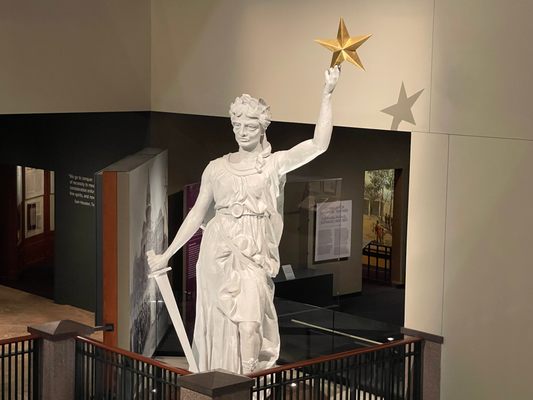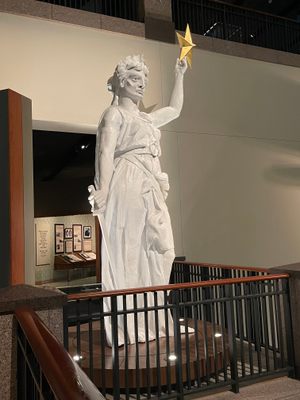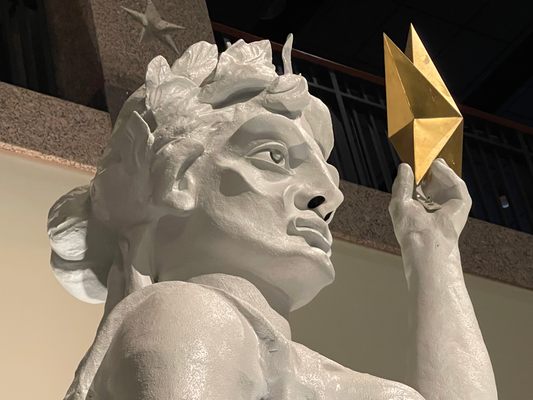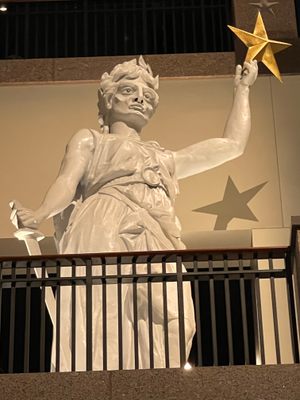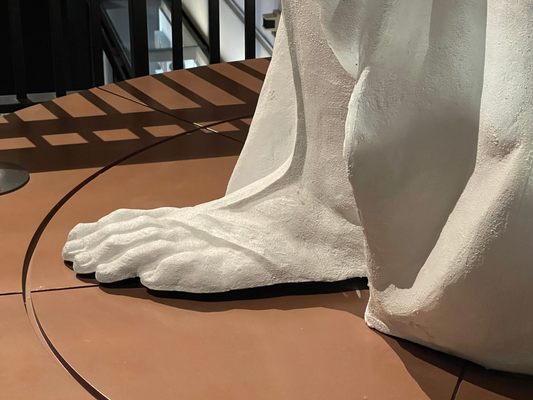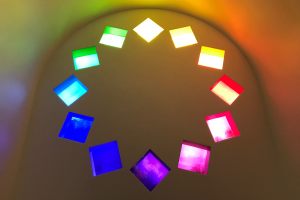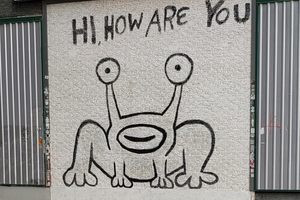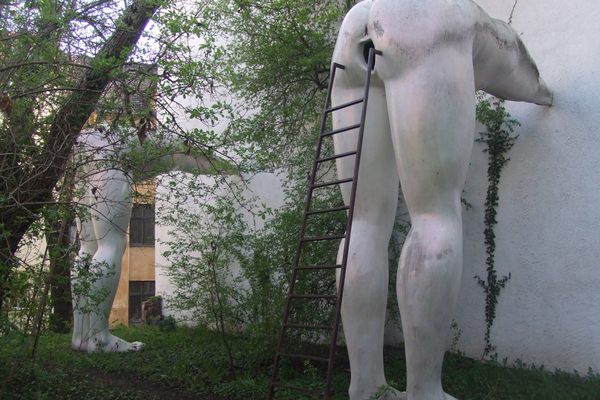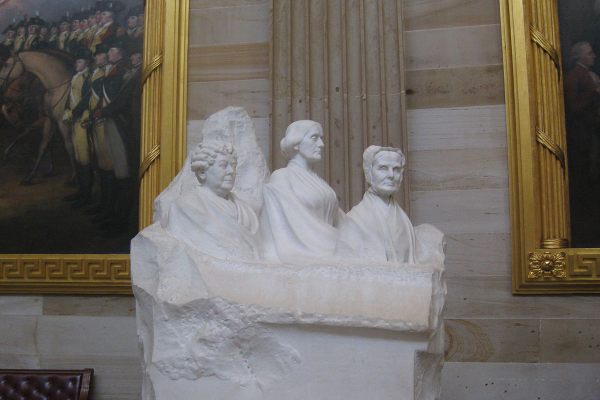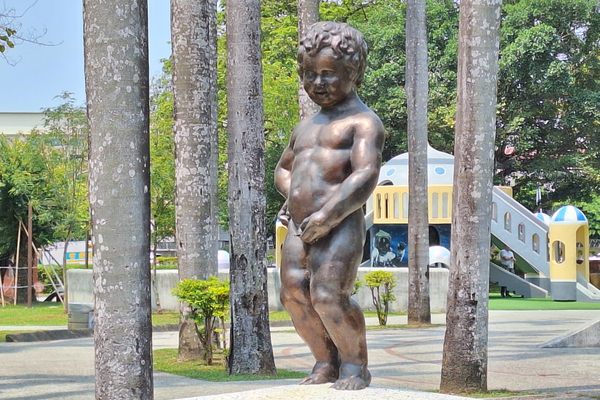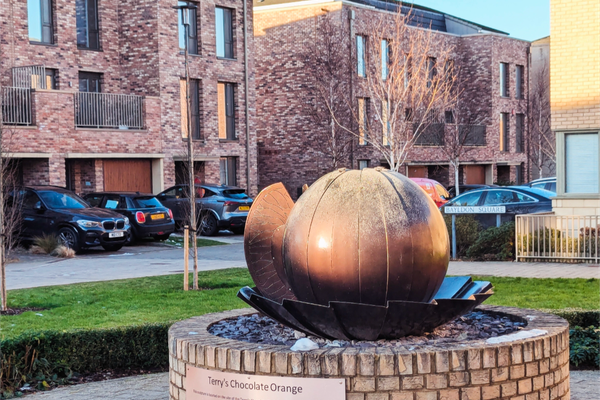About
When architect Elijah E. Myers submitted his winning design for the Texas State Capitol in 1881, the drawings included a female statue crowning the dome. Of Greco-Roman classical design, she was likely inspired by similar contemporary architectural figures, including the Statue of Freedom atop the U.S. Capitol and New York’s Statue of Liberty. Myers’ Goddess stands 16 feet tall and weighs over 2,000 pounds. Intended to represent justice, truth, and art, she poses with a downturned sword in her right hand and a gilded, lone star held aloft in her left. The statue was fabricated from molded zinc and iron. Aided by mules, workers hoisted her to the top of the Capitol’s dome in four pieces and joined her sections with iron bolts.
Myers used a novel design technique in creating his Goddess. Her facial features were intentionally exaggerated so that her face would look normal when viewed from the ground more than 300 feet below. The finished effect was breathtaking—but probably not in the way Myers intended. Many found her appearance unattractive, if not downright ugly. A local reporter dubbed her “Old Lady Goddess.” Another writer compared her face to that of Abraham Lincoln. As if her appearance wasn’t startling enough, an early repainting resulted in ebony hair, rosy skin, and a periwinkle-blue robe tied with a gold sash. In 1939, she was returned to her original monochromatic white coloring.
Over the years, the Goddess became the subject of apocryphal stories. There were rumors that her head was home to a hive of bees which spectators observed flying in and out of her large, flared nostrils. Another tale claimed that a severe storm left her dangling from the Capitol dome by one rusted bolt. Some said that a bipartisan group of elected officials climbed the dome during the storm and reattached her in a fit of uncharacteristic collaboration. And, there were stories of men who insisted that their wife or girlfriend was the model for the statue. Not surprisingly, there was no record of a woman ever coming forward to claim that distinction.
In 1983, workers noticed large cracks on the statue while painting the Capitol dome. The State Preservation Board determined that significant deterioration caused by exposure to inclement weather, pollution, lightning strikes, high winds, temperature changes (and perhaps bees) necessitated her removal from the dome. In 1985, a helicopter lifted the Goddess off the dome and placed her on the Capitol’s South Lawn for a period of visitation by the public. After close examination, the decision was to replace her with a lighter, corrosion-resistant aluminum replica. The replacement was cast from molds of the old Goddess and installed on the Capitol dome on June 14, 1986.
After extensive conservation work, the original Goddess assumed permanent residence at the Bullock Texas State History Museum on September 18, 2000. Because of her size and weight, she was placed before the building was completed, and the museum was built around her. During the statue's restoration, a time capsule containing ephemera from the 1880s was discovered in her star. Her original left arm and star are displayed in the Capitol Visitors Center. They were left unaltered to show her condition when removed from the dome. Now restored to most of her former glory, the Goddess of Liberty monitors the Museum's activities from a comfortable perch on the southwest corner of the building’s second floor.
Related Tags
Know Before You Go
The museum is open Wednesday-Sunday from 10 a.m. to 5 p.m.
Published
March 3, 2022
